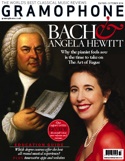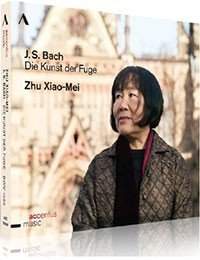Texte paru dans: / Appeared in:
|
|||
|
Reviewer:
Jed
Distler How would Bach react to presenting his entire Art of Fugue in one sitting, with the final fugue incomplete as he left it? With 70 to 90 minutes of D minor fugues and canons, mostly in the piano’s middle register, how does one sustain interest and concentration without compromising the music’s structure and character? Contrapunctus 1 alone reveals not only Angela Hewitt’s solution to these challenges but also the extent of her evolution as a Bach player. While the four-part texture is consistently clear and cogent, Hewitt’s expressive and dynamic range is both expanded and strategically deployed, with lovely ornaments and discreet octave reinforcements. Her practice of lifting the fingers after tied notes gives welcome shape and profile to No 3’s slithery chromatic lines, No 5’s close imitative writing, the often too severely interpreted mirror fugues of Contrapunctus 12 and the final fugue’s third subject based on the letters of Bach’s name. Hewitt’s rethinking of No 6’s double-dotted rhythms and creative ornamentation proves that this piece is quirky rather than monotonous. In No 7, Hewitt’s measured pace does not define the augmented main motif as clearly as in Tatyana Nikolaieva’s comparable yet faster reading (also on Hyperion). But the multisubject fugues Nos 8 and 11 are ideally paced and articulated to the point where you hear how Bach’s harmonic felicities are rooted in lines rather than chords. CPE Bach completed his father’s score by inserting the BWV668a chorale prelude on the final blank page, and Hewitt likewise follows suit after a long pause.
Zhu Xiao-Mei’s interpretation is more impulsive, characterised by unpredictable dynamic contrasts and a wider berth of tempo fluctuation. You hear this immediately in No 4’s exposition, where the loud fugue subject gives way to a relatively muted answer, in the Canon at the Fifth’s surging lines, and the accelerations as No 8’s second theme unfolds. No 11’s thicker passages emerge with unusual transparency and rhythmic bounce. Although Hewitt’s No 10 is better controlled and defined, some may find Xiao-Mei’s faster tempo more lyrically appealing. And whereas Zoltán Kocsis and Cédric Pescia slow the Canon in Augmentation and Contrary Motion to a deadly crawl, Xiao-Mei and Hewitt provide animated relief. The only instance where Xiao-Mei’s expressive notions sound mannered occur in No 12’s slightly tiresome ritards at phrase-ends. Yet neither Hewitt nor Xiao-Mei match the effortless speed and witty linear interplay that Charles Rosen brought to No 9. In short, Xiao-Mei’s pianistic orientation and communicative immediacy complement Hewitt’s painstaking attention to detail, leaving Evgeni Koroliov’s erstwhile 1990 recording on Tacet to split the difference. |
|||
|
|
|
||
|
Cliquez l'un ou l'autre
bouton pour découvrir bien d'autres critiques de CD |
|||





